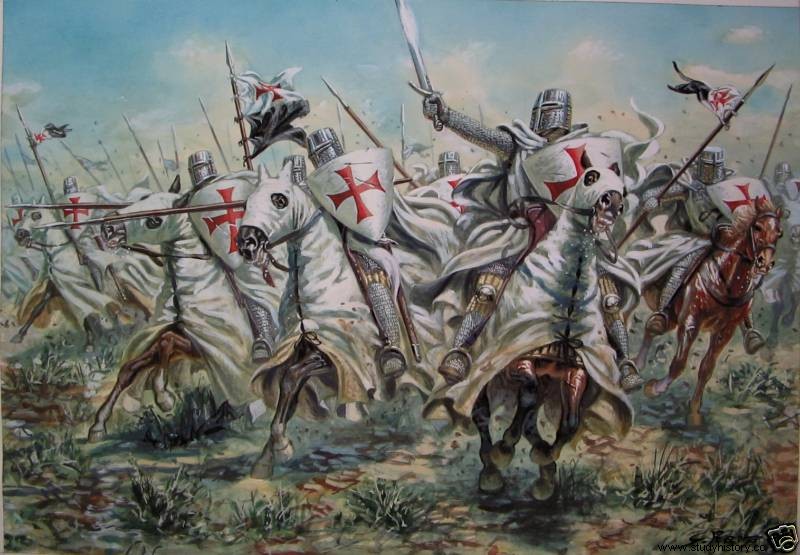When Urban II received a visit from an ambassador of the Byzantine emperor Alexios I Komnenos Asking him for help in defeating the Seljuk Turks, the pope saw an opportunity to unite all of Christendom under one banner. So, he would not only lend aid to the emperor, but once the territory lost to the Byzantines had been recovered, he would lead—or rather, he would order to lead—his armies to the Holy Land to recapture Jerusalem. Therefore, at the Council of Clermont (1095), Urban II called on all of Christendom to fight against the infidels under the banner of the cross (crusade) to the cry of…
God wants it

At the call of what would be the First Crusade, Initially headed by France and the Holy Germanic Empire, it was joined by knights, soldiers and a large population - some religious fanatics and others without a job or benefit who saw the crusade as an opportunity to get loot - until it became a massive migration. In 1099 they conquered Jerusalem. Although the crusade was a success, many crusaders also died during the various battles. The wish of the knights of noble family killed in the crusade was that their bodies be returned to Europe, but how?
In the words of the Italian historian Boncompagno da Signa in the 13th century…
The Germans remove the entrails from the corpses of their high-ranking knights, if they die abroad, and let the rest of the body boil for a long time in the boilers. The meat, tendons and cartilage separate them from the bones. The bones are washed in scented wine and sprinkled with spices, then brought back home.
This is how Boncompagno da Signa explains what the Mos Teutonicus consisted of (German funeral). This practice was common among the Crusaders when they died in the Holy Land. Given the impossibility of being able to take the incorrupt body to the knight's place of origin, they extracted his heart and buried it in some sacred place, then dismembered the rest of the body and boiled it for several hours to keep only the bones. In this way, they could be easily transported and taken to their families for burial. Until the Church, in this case Pope Boniface VIII he said, we have come so far. In 1300, he promulgated the bull De Sepulturis prohibiting, under penalty of excommunication, butchering and boiling bodies to separate the bones and meat.
Image:Universal History,
